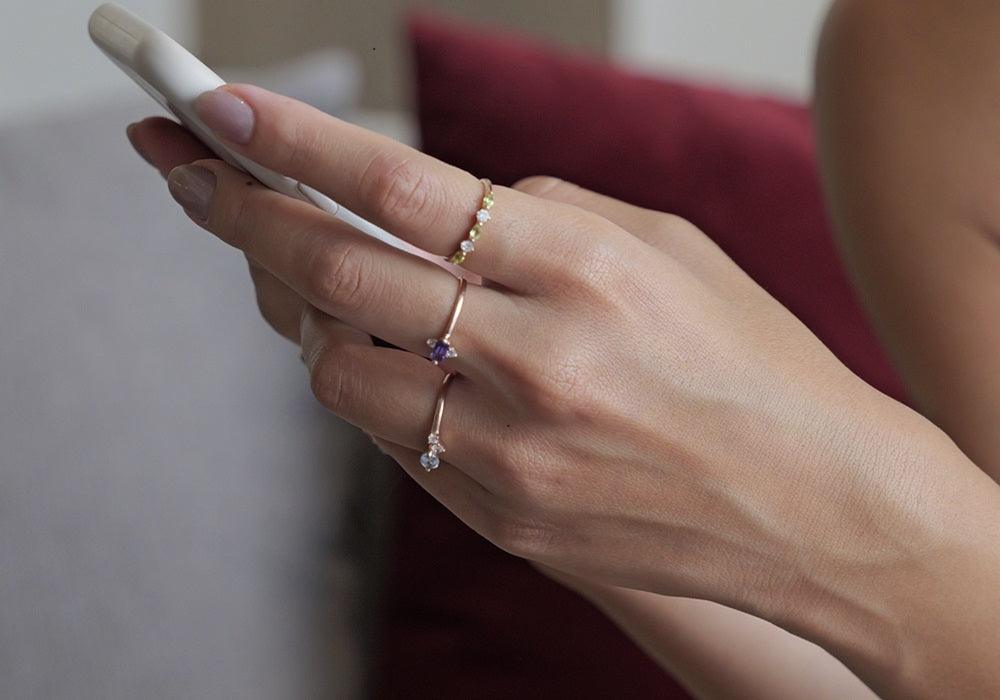DIAMONDS vs LAB DIAMONDS vs MOISSANITE
Lab grown vs natural diamond - Diamonds are an iconic gemstone and a first choice for many. But not everyone can afford diamond jewelry.
JEWELRY SUGGESTIONS
Thankfully, there are some alternatives. Both lab diamonds and moissanite look like the real deal but are eco-friendly, and cost just a fraction of the price.
But are there any differences? And if so, what are they? Well, if you wish to know more about the differences between lab diamonds, moissanite, and their natural counterparts, read on.
Lab Grown vs Natural Diamond - Natural Diamonds
Formed far beneath Earth’s surface, in the planet’s mantle layer, with billions of years of intense heat and pressure causing carbon to rearrange on an atomic level, and thus taking on the solid form of a diamond. Natural Diamonds are expensive because of demand and how difficult it is to find large, good-quality stones. Natural Diamonds will appeal to purists who like the special feeling of having a stone from the earth.

Lab grown vs natural diamond - Lab Diamonds
also known as “Synthetic Diamonds” have the same properties as natural diamonds and are practically identical, both are crystal-clear carbon, with the same hardness (10/10), the same look, and the same sparkle, the only difference being one is made in a lab instead of the Earth’s crust. The only way you can tell it is lab grown is if you have it tested. They’re cheaper than natural ones but more expensive than Moissanite.
Moissanite
While natural Moissanite does exist, it is incredibly rare and comes in tiny crystals. So most Moissanite is created in a lab. However Moissanite has a different chemical makeup than that of Diamonds and Lab Diamonds. While a diamond is pure carbon, Moissanite is both silica and carbon. As a result, Moissanite sparkles more and isn’t as hard as their natural counterpart. It's a good choice if you just want something sparkly and you don’t care whether it’s natural or not. It’s also the cheapest of the three options.


